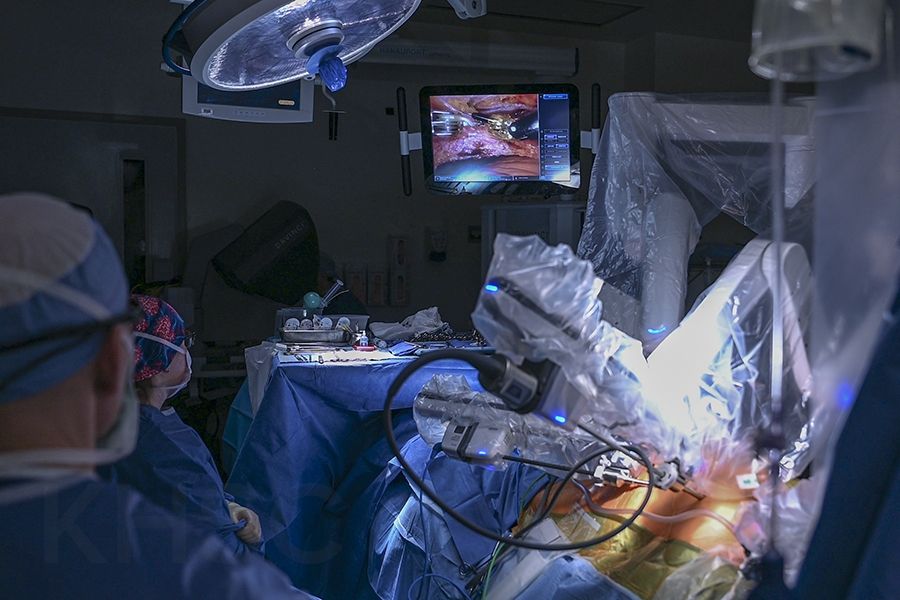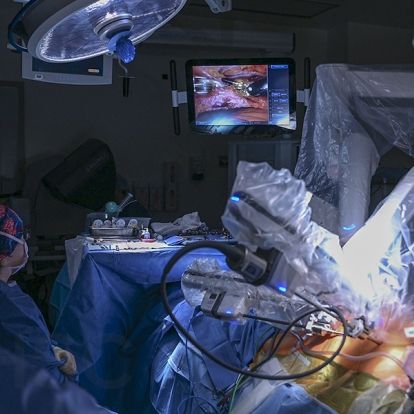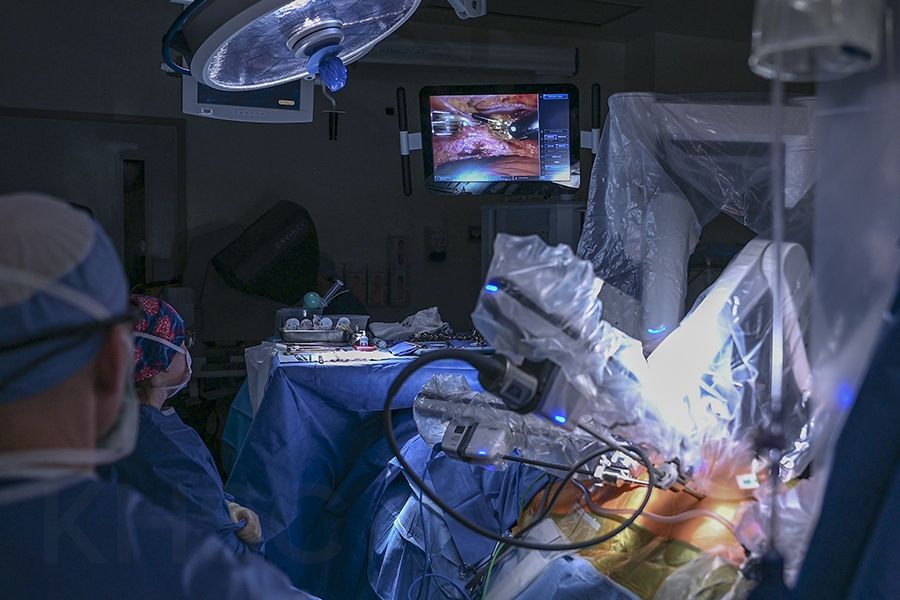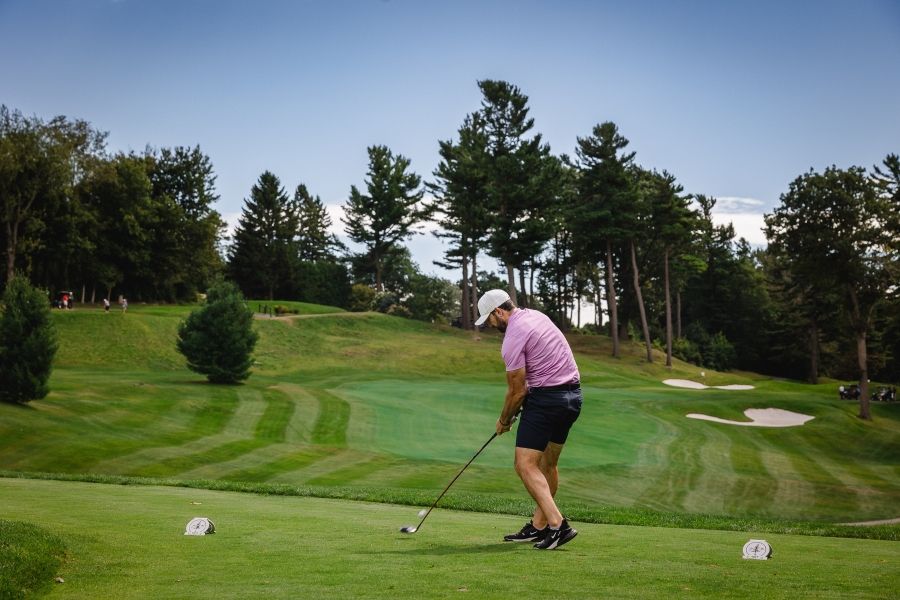
Late January brought about a busy week for the Reid family household. Sunny winter weather had the family outside for walks, there were visits to the local coffee shop for hot drinks and chili, and mid-week included a three-day admission to Kingston Health Sciences Centre (KHSC) for cardiac bypass surgery.
“I have to say, not many people have cardiac bypass surgery on a Thursday morning and then are down in the Tim Horton’s line on a Saturday morning ordering a coffee,” says Sean Reid with a laugh, a recent cardiac bypass patient who is also the first patient to undergo cardiac bypass surgery on the robotic operating system at KHSC.
Since its launch in November 2018, the A. Britton Smith QC Robotics program at KHSC has changed the lives of more than one hundred patients in southeastern Ontario who require surgery for certain types of prostate, rectal, gynecological and general surgeries. Cardiac is now the latest approach available for some patients on the robot, further expanding the program to even more patients who would benefit from this innovative surgical approach.
“Typically patients undergoing cardiac surgery are required to have a big incision in the front of the chest which is painful, can lead to a slow recovery period and can require considerable time before they’re able to return to normal daily activities,” says Dr. Gianluigi Bisleri, a cardiac surgeon at KHSC. “The robotic platform can facilitate approaches that make the surgical procedure less traumatic, less painful and can allow patients to return to a normal lifestyle in a matter of a few weeks rather than a few months, which is quite an impressive change in the quality of life for these patients after cardiac surgery.”
Click the video to hear directly from members of the robotics team on the patient benefit of this innovative surgical approach, or continue to read the story below.
For Sean and his family, the benefit of robotic-assisted surgery was felt almost immediately.
“The day after surgery I walked down to the sunroom (in the hospital) to watch TV. I’ve been able to take myself to the bathroom without any assistance, have good mobility overall and can get out the door every day. It’s a huge morale booster that I haven’t lost that independence, which I don’t believe I would have if it hadn’t been for the robotic surgery.”
Speedier recovery times mean not only are there fewer days spent as an in-patient in the hospital setting, freeing up bed space for those in critical need, but it can also positively impact the care that is typically placed on the shoulders of the family members who act as caregivers for the patient.
“No surgery is to be taken lightly and though this (robotic-assisted) approach is less invasive it is still invasive, however, it has meant that as a caregiver I don’t have to be there right at every turn and movement that is made,” says Roselynn Reid, spouse of Sean Reid. “In our home we have sixteen stairs up to where our bedroom is and one of my concerns going into the surgery was how Sean would be able to get to the bedroom. When I asked what home arrangements I would need to make I was told that the stairs wouldn’t be a problem for him, as long as there was no running!”
Currently, bypass surgery is the only cardiac surgical option available on the robot. However, there are plans to expand the cardiac surgical options available to benefit more patients.
“As a minimally-invasive surgeon, even without the robot, one of the questions I often hear is “what are the benefits in terms of survival?”" says Dr. Bisleri. “I think that sometimes the problem is what we use as a parameter for success. The counter-question I ask people is, “if you have a procedure that is safe and effective and does not increase mortality, but is less invasive, why not offer it?" If I can spare the big incision and big trauma to patients, I want to do that.”
Speaking with Sean less than a week after his cardiac bypass surgery, the conversation wrapped up with him sharing his plan for the rest of the day.
“It’s a sunny day outside and I’m aiming to get a two-kilometer walk in this morning – yesterday included a stroll around the mall but today I want to be outside, enjoy the day and get a longer walk in.”
If you wish to support this or other surgical innovations, donations to Kingston Health Sciences Centre surgical program can be made through University Hospitals Kingston Foundation here.
Gallery


Since its launch in November 2018, the A. Britton Smith QC Robotics program at KHSC has changed the lives of more than one hundred patients in southeastern Ontario who require surgery for certain types of prostate, rectal, gynecological, cardiac and gener



